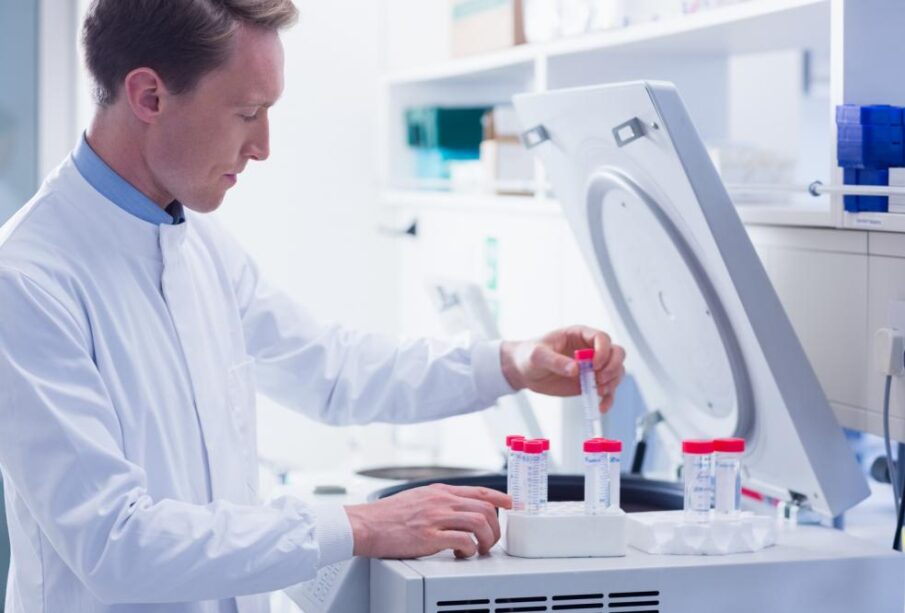Six Most Important Parts of a Temperature Monitoring System

You must have noticed that medical facilities and laboratories are increasingly using electronic temperature monitoring systems.
They use the systems for two main reasons–safeguarding their products and conforming to the regulatory mandates.
With the availability of a broad range of such systems at a wide range of prices, you can get confused in selecting which one to buy.
It will help if you acquaint yourself with the key features of such systems before you finalize your purchase.
Table of Contents
Temperature Probes
Temperature measurement is the key need among various industries, such as food, medical, pharmaceutical, machine and equipment monitoring, and environmental monitoring.
A sensor, such as a thermocouple, is what enables temperature monitoring systems to capture temperature data. It would help if you understood the types of sensors to figure out which will be the best for your needs.
There are three types of sensors used in temperature monitoring systems–thermocouples, RTDs and thermistors.
Thermocouples
They are not only inexpensive but also a widely used category of sensors in temperature monitoring systems.
You can use a thermocouple when you require a wide operating range of temperature, and accuracy is not that important. Also, when you want to curtail expenses.
Typically, a thermocouple consists of two different metal wires of different alloys and fuse together at a single point.
While working, a thermocouple produces an output voltage, usually in mini volts, proportional to the temperature.
Its system samples the thermocouple junction voltage and converts the voltage into temperature using a calibration equation.
The system also uses a cold junction reference to compensate for any offset voltage occurring at the connections between the thermocouple wires and the device.
Due to the differences in the thermocouple wire composition, the temperature measurement accuracy varies within 1-2 degrees F.
However, there are some special wires which reduce such errors.
You can consider a thermocouple when you want to implement an easy-to-use device at a low cost.
RTD
RTD sensors depict temperature as a function of resistance. Compared to thermocouples, RTD’s temperature readings are more accurate, but the operating temperature range is narrower.
Typically, an RTD sensor comprises a fine platinum wire wound around a cylinder. The sensor shows a resistance versus temperature curve with a particular slope. Typically, the resistance at 0 degree C is 100 ohm.
While measuring the temperature, the system will source a known current and subsequently measure the resultant voltage. It will calculate the resistance, which will enable measuring the temperature with the help of Ohm’s law.
Nickel and copper wires are also used in RTD sensors apart from platinum wires.
RTD sensors are the ideal choices when you need accurate temperature measurements within a narrow temperature range. You can consider them for vaccine refrigerators and freezers.
Thermistors
Thermistors are sensors whose resistance changes with temperature. They are more or less like RTDs, but there is a difference. Thermistors’ resistance change is highly non-linear.
Thermistors are also more accurate than thermocouples and can provide highly accurate temperature measurements, with an accuracy of 0.01 degree C. The temperature range is, however, narrow, typically within 0 to 100 degrees C.
Like RTD sensors, thermistors also have a specific resistance of 2,252 Ohm at 0 degree C.
Also, note that each thermistor family has a particular resistance versus temperature characteristic.
Thermistors are worthy of consideration when you want to record temperature with the highest accuracy within a limited range.
Thermal Buffers
These are thermal masses, which can be materials or liquids. You can attach thermal buffers to the temperature probe to increase its time constant, slowing down the response time to match the stored material’s temperature.
It entails the advantage of the reported temperature mimicking the stored product’s actual temperature in the cold storage unit.
The common types of thermal buffers in cold storage are glycol bottles, nylon blocks and vials full of glass beads.
For example, a probe that measures refrigerators’ internal temperature, storing vaccines has a faster response time than old-fashioned mercury thermometers.
Measurement Device
The temperature measurement device is the fundamental component of a temperature monitoring system.
There are many types of temperature measurement devices, from single-channel devices with a USB interface to multi-channel data logging systems.
Such devices perform complex tasks. Typically, they connect to temperature sensors and digitize the temperature value. Subsequently, they transmit the readings to the memory or a server as per the requirement.
The measurement device can have options for battery or external power operation. Other features include the devices having fixed input types, sensors, or universal inputs with screw terminal connections, allowing you to attach your prefered type of sensors.
The inexpensive devices typically bear a single type of input type.
Software
You will have to retrieve the data from the monitoring system to study the pattern. You can choose to make a chart or create a report with the data as per your needs. The software that comes with the device helps you display the data and set up alarming conditions.
Alarms
Alarms are the most critical elements of an efficient temperature control system. As temperature deviation can cause damages to the stored items in cold storage units, alarms can help you know if the internal temperature goes outside the prescribed range.
Alarms can be local or remote. Local alarms can alert you when you are in the vicinity of the cold storage. And remote alarms can alert you wherever you are, typically through an app on your smartphone.
Typical local alarms are LED indicators and buzzers apart from external alarm relay outputs for connection to sirens or horns.
Remote alarms can automatically send you an email or text alarm to your smartphone so you can always remain aware of the temperature condition in your cold storage unit.










